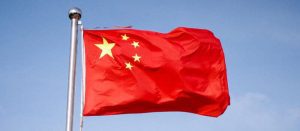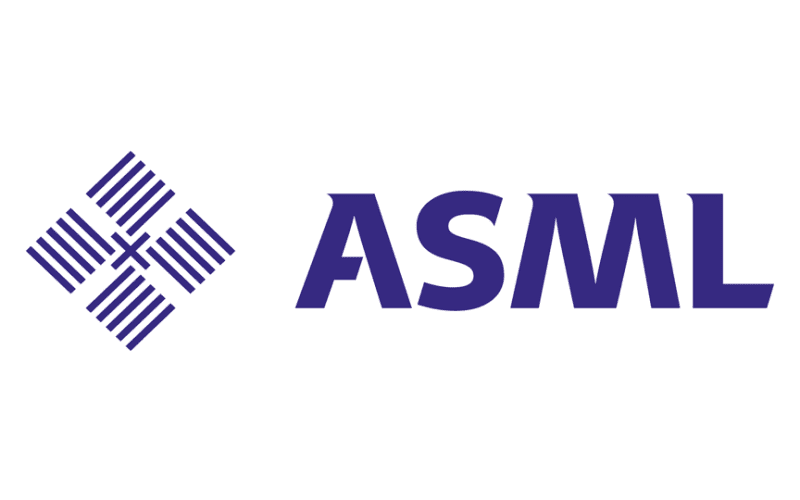The Impact of US Sanctions on ASML and China’s Semiconductor Sector
Introduction: Meet the Author
Hello, dear readers. My name is Fred Wilson, and I am a seasoned blog writer and a former semiconductor engineer with over 10 years of experience in the industry. I have worked on various projects involving chip design, fabrication, testing, and optimization. I have also witnessed the rapid evolution and transformation of the semiconductor industry over the years.
In this article, I will share with you my insights and analysis on one of the most important and controversial topics in the semiconductor industry today: the US sanctions on ASML and China. I will explain what these sanctions are, how they are affecting the global semiconductor supply chain, how ASML and China are responding to them, and what the future prospects for the industry are. I hope you will find this article informative, interesting, and valuable.

What are the US Sanctions on ASML and China?
ASML is a Dutch company that is the only one in the world that makes the most advanced lithography machines, which are essential for producing the most sophisticated chips. Lithography is the process of using light to etch patterns on silicon wafers, which are then cut into individual chips. The smaller and more precise the patterns, the more powerful and efficient the chips are.
The US has imposed sanctions on ASML and China, which aim to cut off China from accessing critical chipmaking equipment and technology from ASML. The US claims that these sanctions are necessary to protect its national security and economic interests, as well as to prevent China from using the chips for military purposes. The US has also pressured its allies, such as the Netherlands and Japan, to comply with its sanctions and to deny export licenses to ASML and other chip equipment suppliers.
According to CNBC, the US sanctions on ASML and China have been in place since 2019, but they have become more stringent and effective in 2020 and 2021. The US has expanded its sanctions to cover more Chinese companies, such as Huawei, SMIC, and Hikvision, and to require more licenses and approvals for exporting chip equipment and technology to China. The US has also tightened its export control rules, such as the Foreign Direct Product Rule and the Entity List, to restrict the use of US-origin technology and software by Chinese companies.
According to Reuters, the US sanctions on ASML and China have had a significant impact on the global semiconductor industry, as they have disrupted the supply and demand of chips, increased the costs and risks of doing business, and created uncertainty and instability in the market. The US sanctions on ASML and China have also sparked a geopolitical and technological rivalry between the US and China, as well as between their allies and partners, over the control and dominance of the semiconductor industry.

How are the US Sanctions Affecting the Global Semiconductor Supply Chain?
The global semiconductor supply chain is a complex and interdependent network of companies and countries that are involved in the design, production, distribution, and consumption of chips. The global semiconductor supply chain consists of four main segments: the foundries, the design houses, the equipment suppliers, and the end-users.
The foundries are the companies that manufacture the chips, using the equipment and technology provided by the equipment suppliers. The design houses are the companies that design the chips, using the software and tools provided by the equipment suppliers. The equipment suppliers are the companies that provide the equipment, technology, software, and tools for the chipmaking process. The end-users are the companies and consumers that use the chips for various applications, such as smartphones, computers, cars, and so on.
The US sanctions on ASML and China have affected each segment of the global semiconductor supply chain in different ways, as follows:
- The foundries: The US sanctions on ASML and China have limited the ability of the Chinese foundries, such as SMIC, to acquire the most advanced lithography machines from ASML, which are needed to produce the most cutting-edge chips. This has created a gap between the Chinese foundries and the leading foundries, such as TSMC and Samsung, which have access to ASML’s machines and can produce the most advanced chips. The US sanctions on ASML and China have also increased the demand for the chips produced by the leading foundries, as the Chinese foundries and their customers have turned to them for alternative sources of supply. This has led to a shortage of chips, especially for the automotive and consumer electronics sectors, which has caused delays, disruptions, and price hikes in the market.
- The design houses: The US sanctions on ASML and China have restricted the ability of the Chinese design houses, such as Huawei, to use the US-origin software and tools for designing the chips, which are essential for optimizing the performance and functionality of the chips. This has reduced the competitiveness and innovation of the Chinese design houses, as they have to rely on alternative or inferior software and tools, or to develop their own. The US sanctions on ASML and China have also increased the demand for the chips designed by the non-Chinese design houses, such as Qualcomm and Nvidia, as the Chinese design houses and their customers have turned to them for alternative sources of supply. This has led to a surge of orders and revenues for the non-Chinese design houses, as well as a boost of their market share and influence.
- The equipment suppliers: The US sanctions on ASML and China have affected the business and operations of the equipment suppliers, such as ASML, Lam Research, and Applied Materials, which provide the equipment, technology, software, and tools for the chipmaking process. On one hand, the US sanctions on ASML and China have reduced the sales and profits of the equipment suppliers, as they have lost a large and lucrative market in China, which accounts for about 20% of the global semiconductor equipment market. On the other hand, the US sanctions on ASML and China have increased the demand and prices of the equipment and technology provided by the equipment suppliers, as the foundries and the design houses have increased their investments and expenditures on upgrading and expanding their chipmaking capabilities, in order to cope with the shortage and the competition in the market.
- The end-users: The US sanctions on ASML and China have impacted the availability and affordability of the chips for the end-users, such as Apple, Samsung, Toyota, and Sony, which use the chips for various applications, such as smartphones, computers, cars, and so on. The US sanctions on ASML and China have caused a shortage of chips, especially for the automotive and consumer electronics sectors, which has resulted in delays, disruptions, and price hikes in the market. The US sanctions on ASML and China have also affected the quality and performance of the chips for the end-users, as they have to use alternative or inferior chips, or to compromise on some features or functions, due to the limited supply and the technological gap in the market.

How are ASML and China Responding to the US Sanctions?
ASML and China are not passive or helpless in the face of the US sanctions. They are actively and strategically responding to the US sanctions, and adopting various measures and initiatives to cope with the challenges and opportunities presented by the US sanctions. Some of the actions taken by ASML and China are as follows:
- ASML: ASML has taken a pragmatic and balanced approach to dealing with the US sanctions, as it tries to maintain its business and relations with both the US and China, as well as with other countries and regions. ASML has stopped its US staff from servicing its Chinese customers, in order to comply with the US rules and to avoid penalties and sanctions. ASML has also sought exemptions and waivers from the US authorities, in order to resume its exports and sales to China, arguing that its machines are not a threat to the US national security and that its technology is not exclusively US-origin. ASML has also expanded its presence and market in other countries and regions, such as Europe, Japan, and Taiwan, where it has received more orders and support from the governments and the customers.
- China: China has taken a determined and ambitious approach to overcoming the US sanctions, as it tries to reduce its dependence and vulnerability on foreign chip equipment and technology, and to achieve its goal of technological self-reliance and leadership. China has invested heavily in its domestic chip development, allocating billions of dollars and resources to support its chip industry, especially for the research and innovation of the core and critical technologies, such as lithography, materials, and design. China has also diversified its supply sources, seeking alternative or complementary suppliers and partners from other countries and regions, such as Japan, South Korea, and Europe, where it has increased its imports and cooperation on chip equipment and technology. China has also pursued its technological self-reliance, developing its own chip equipment and technology, such as the Shanghai Micro Electronics Equipment (SMEE), which has made some progress and breakthroughs in the field of lithography, although it still lags behind ASML in terms of performance and quality.

What are the Future Prospects for the Semiconductor Industry?
The semiconductor industry is one of the most dynamic and influential industries in the world, as it drives and enables the development and advancement of various fields and sectors, such as information technology, communication, artificial intelligence, biotechnology, and so on. The semiconductor industry is also one of the most competitive and challenging industries in the world, as it faces and overcomes various obstacles and uncertainties, such as the technological complexity, the market volatility, the geopolitical tension, and the environmental impact.
The US sanctions on ASML and China are one of the major factors that are shaping and changing the semiconductor industry today, and that will continue to do so in the future. The US sanctions on ASML and China have created both challenges and opportunities for the semiconductor industry, as they have stimulated and accelerated the innovation, collaboration, and resilience of the industry players and stakeholders.
The future prospects for the semiconductor industry are not clear or certain, as they depend on various factors and scenarios, such as the development and outcome of the US-China rivalry, the advancement and adoption of the new and emerging technologies, the demand and supply of the chips for the different and diverse applications, and the regulation and governance of the industry by the governments and the organizations.
However, some of the possible and plausible trends and challenges that are expected to influence and affect the semiconductor industry in the coming years are as follows:
- Innovation: Innovation is the key to the success and survival of the semiconductor industry, as it enables the industry to overcome the technological complexity and the market volatility, and to create and capture the new and emerging opportunities. Innovation is also the key to the competition and cooperation of the semiconductor industry, as it determines the relative strengths and weaknesses of the industry players and stakeholders, and the potential areas and modes of collaboration and partnership. Innovation in the semiconductor industry will involve not only the improvement and optimization of the existing technologies and processes, such as the Moore’s Law, the FinFET, and the 3D NAND, but also the exploration and experimentation of the new and emerging technologies and processes, such as the quantum computing, the neuromorphic computing, and the nanotechnology.
- Collaboration: Collaboration is the necessity and the reality of the semiconductor industry, as it enables the industry to cope with the technological complexity and the market volatility, and to leverage and share the resources and capabilities of the industry players and stakeholders. Collaboration is also the necessity and the reality of the semiconductor industry, as it reflects and responds to the geopolitical tension and the environmental impact, and to the regulation and governance of the industry by the governments and the organizations. Collaboration in the semiconductor industry will involve not only the continuation and expansion of the existing alliances and networks, such as the GlobalFoundries, the Arm, and the RISC-V, but also the formation and development of the new and emerging alliances and networks, such as the Open RAN, the OpenAI, and the Open Hardware.
- Resilience: Resilience is the ability and the quality of the semiconductor industry, as it enables the industry to adapt and recover from the technological complexity and the market volatility, and to maintain and enhance its performance and functionality. Resilience is also the ability and the quality of the semiconductor industry, as it enables the industry to withstand and overcome the geopolitical tension and the environmental impact, and to preserve and protect its integrity and sustainability. Resilience in the semiconductor industry will involve not only the strengthening and diversifying of the existing supply and demand chains, such as the TSMC, the Qualcomm, and the Apple, but also the building and securing of the new and emerging supply and demand chains, such as the SMIC, the Huawei, and the Xiaomi.
Conclusion: Wrap Up and Call to Action
In this article, I have discussed the US sanctions on ASML and China, and what they mean for the semiconductor industry. I have explained what the US sanctions are, how they are affecting the global semiconductor supply chain, how ASML and China are responding to them, and what the future prospects for the industry are. I hope you have learned something new and useful from this article, and that you have gained a better understanding and appreciation of the semiconductor industry.
I would like to thank you for your time and attention, and I invite you to share your feedback, comments, and questions with me. I would love to hear from you and to learn from you. You can reach me through my social media accounts, my blog, or my email address, which are listed below.
Thank you for reading, and I hope to see you again soon.












